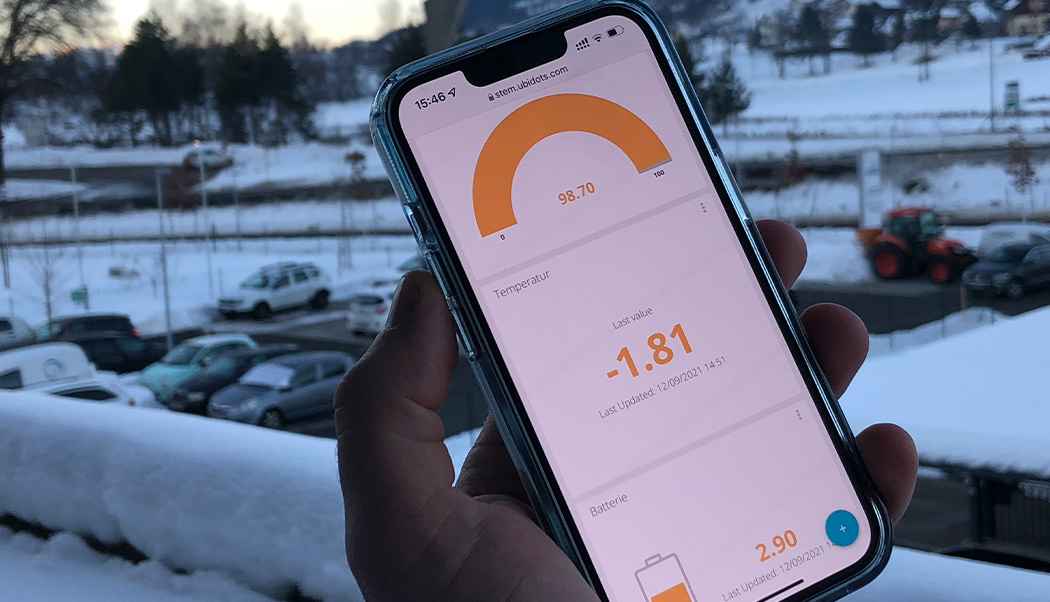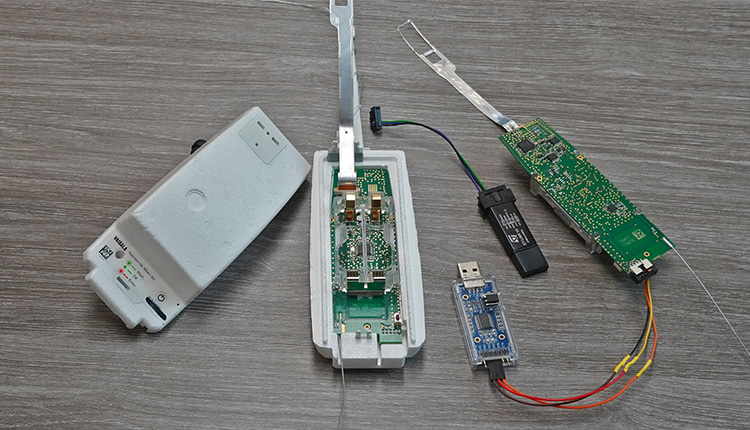Amplifying Analog Voltages with the LM358
05.03.2025
Elektronik | Funk | Software
Der Technik-Blog

In the first part, a Dragino LHT65 sensor was connected to the Helium LoRaWAN. Since the Helium LoRaWAN only transports the sensor data, but does not store it or display it in plain text, an external service is required for this purpose. Ubidots is one of many IoT platforms that collects sensor data and can display it graphically. This article is about setting up an integration from Helium to Ubidots. As an example, we will again work with the well-known LHT65 sensor. However, in principle this tutorial will work with any sensor.
In order for Ubidots to receive sensor data, the sensor must first communicate with the Helium LoRaWAN. Also, a decoder for the specific sensor should already exist in the Helium console. All information on how to set up a sensor can be found in the first article. Additionally, an account at Ubidots is required. For private usage, up to three devices can be connected free of charge according to the current status.
Ubidots provides several interfaces where data can be received. The first one is to add a new "Data Plugin" for the Helium network:
The second step is to assign a token. This is a key that prevents unauthorized people from sending data to Ubidots. Usually the default token (automatically generated key) is selected for this:
A device name and an optional description can be assigned to the plugin:
Afterwards, the plugin is saved and displayed in the overview:
The fourth step is to set up the actual interface. Ubidots displays an endpoint URL under the Decoder item. This URL is "the receiver" for data packets. As new data arrives from the sensor on the Helium LoRaWAN, the network calls this URL and uses HTTP POST to pass the sensor data to Ubidots. The URL is copied to the clipboard:
After the URL of Ubidots is known, it can be inserted into Helium. A new HTTP integration is added in the Console for this purpose:
The previously copied URL from Ubidots will now be pasted into the Console:
Unlike TTN, Helium does not have a central integration in an application, but rather a specific flow for each sensor. Next, a flow is set up where the sensor sends data via the decoder to the integration (Ubidots):
From now on, all newly received data sets will be forwarded to Ubidots. If you click on Logs in the Data plugin at Ubditos, the raw data should be displayed there already a few seconds later.
After the first successful data transfer, a dashboard can be created at Ubidots:
A sensor usually provides several data. For example, with the LHT65, there are two temperature values, a humidity value and battery voltage. The Helium LoRaWAN also adds other parameters such as signal strength or noise ratio. Any desired value can be included as a widget in the dashboard:
Ubidots offers several widgets to display the desired data. The following screenshot shows some values from LHT65 in the dashboard:

Every day hundreds of meteorological radiosondes fall from the sky. In this article we convert a radiosonde into a GPS tracker for APRS, RTTY & CW
read moreAlternative payload decoder for the SenseCAP T1000 LoRaWAN GPS tracker. Compatible with TTN Mapper, LoWTrack and other apps.
read moreAEQ-WEB © 2015-2025 All Right Reserved